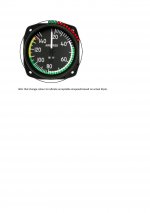It is rarely the 1000 things available that are wanted, and, you speak as a person who seems relatively unacquainted with flying with EFIS.
On a machine that has a one hour duration, not intended for cross country, or operating in relatively uncluttered airspace with few or no zonal restrictions, you have a relevant point. Not however, when operating in complex airspace, with heavier traffic concentrations...and as for weather awareness, on longer flights than an hour in any direction it becomes increasingly valuable.
As for 'tech savvy’, operating a system that has been set up, and that has been pruned of all unnecessary features, gives a much greater situational awareness in position, traffic proximity, and relevant weather, and, is a little different to having to install these systems oneself where different skill set becomes necessary.
How many/what percentage, of your high end AR’s have at least some form of EFIS installed?
Why?

